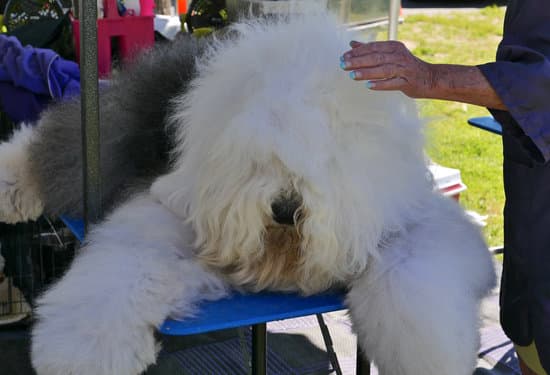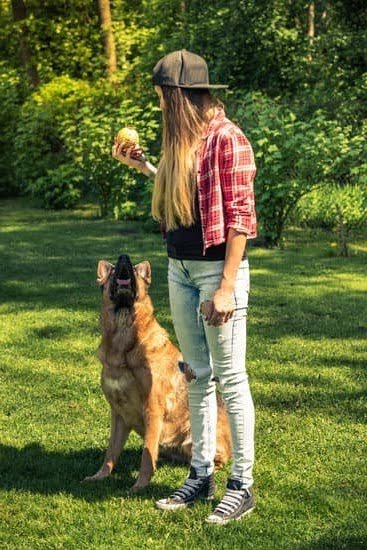Introducing the iFetch device and its benefits for dog training:
Are you looking for a fun and interactive way to train your dog? Look no further than the iFetch. This innovative device is designed to engage your canine companion while providing mental and physical stimulation.
In this article, we will explore the ins and outs of training your dog to use the iFetch, from understanding the device itself to troubleshooting common challenges that may arise. By incorporating the iFetch into your training routine, you can foster a stronger bond with your furry friend while keeping them entertained and exercised.
Every dog needs both mental and physical stimulation in their daily routine. However, finding an activity that accomplishes both can sometimes be a challenge. The iFetch proves to be an excellent solution as it combines playtime with training. Not only does this device encourage physical exercise through retrieving balls, but it also engages your dog’s mind by teaching them how to use the iFetch independently.
By allowing your pup to interact with the iFetch regularly, you are promoting better overall well-being. Dogs who receive adequate mental stimulation are often calmer, less prone to destructive behaviors, and generally happier. Additionally, regular exercise is crucial for maintaining a healthy weight and promoting cardiovascular health in our four-legged friends.
So if you’re ready to embark on an exciting training journey with your dog, keep reading as we delve into understanding how the iFetch works and how you can prepare your furry friend for this captivating adventure.
Understanding the iFetch Device
The iFetch device is a popular tool used for dog training and playtime. Understanding how the iFetch works and its components is essential to successfully incorporating it into your dog’s training routine.
Description of the iFetch
The iFetch is an interactive ball launcher designed for dogs. It consists of a launch mechanism and a compartment where balls are stored. The device comes in different sizes to accommodate various dog breeds. The iFetch is battery-operated and can be easily transported for outdoor or indoor use.
How the iFetch Works
The iFetch operates on a simple principle – it launches balls for your dog to chase and fetch. Once the device is turned on and loaded with balls, it will eject one at a time, either upon pressing a button or when your dog drops the ball into the designated area. This enables your dog to play fetch even when you’re not available.
Different Settings of the iFetch
The iFetch offers different settings to cater to various training stages and individual dogs’ needs. It typically has distance settings that determine how far the ball will be launched, usually ranging from 10 to 30 feet. Some devices also have adjustable launch angles, allowing you to change the trajectory of the ball. Additionally, advanced models may have speed settings that control how quickly the balls are launched.
Understanding these features will help you customize your training sessions based on your dog’s abilities and progress over time. It’s important to start with lower distances and slower speeds initially, and gradually increase them as your dog becomes more comfortable with using the iFetch.
By familiarizing yourself with how the iFetch device operates, you can better incorporate it into your dog’s training routine. This understanding will ensure that both you and your furry friend get the most out of using this innovative tool.
Preparing Your Dog for iFetch Training
Before diving into iFetch training, it is essential to assess your dog’s activity level and readiness for this type of training. The iFetch can be a fantastic tool for dogs that have excess energy, need mental stimulation, or enjoy playing fetch. However, if your dog is not physically active or easily overwhelmed, it may be best to introduce physical exercise gradually before incorporating the iFetch.
Basic obedience commands are also crucial for successful iFetch training. Your dog should be able to follow commands such as “sit,” “stay,” and “drop it.” These commands will help you control the session and ensure a safe and positive experience for both you and your dog.
Setting up a designated training area can greatly assist with iFetch training. Choose an area in your home or backyard where you can easily control the environment and eliminate distractions. This will allow you to focus on teaching your dog how to use the iFetch without any unnecessary interruptions.
Once you have assessed your dog’s readiness for iFetch training, established basic obedience commands, and set up a suitable training area, it is important to familiarize your furry friend with the iFetch gradually. Introducing them slowly helps prevent overwhelming them with this new device.
Positive reinforcement is key during this process. Start by letting your dog explore the iFetch while giving them treats or praise when they show interest in it. This will create a positive association between your dog and the iFetch. Gradually move on to rewarding them when they touch or interact with the machine.
Step-by-step instructions are crucial when introducing the iFetch to your dog. Begin by placing their favorite toy or ball near the machine so they associate it with playtime. You can also hold treats near the machine’s opening to encourage them to approach it willingly.
By preparing your dog properly for iFetch training, you are setting them up for success and ensuring a positive experience throughout their training journey. Remember to be patient, use positive reinforcement, and take it at your dog’s pace. With consistency and practice, your dog will be eagerly using the iFetch in no time.
Familiarizing Your Dog with the iFetch
To successfully introduce your dog to the iFetch device, it is important to take a gradual approach in order to avoid overwhelming them. By using positive reinforcement techniques, you can create a positive association with the iFetch and make the training experience enjoyable for your dog.
One tip for familiarizing your dog with the iFetch is to start by introducing them to the balls that will be used with the device. Encourage your dog to sniff and interact with the balls, and use treats or praise to reward their interest. This will help them associate the balls with something positive and increase their curiosity towards the iFetch.
When your dog shows interest in the balls, you can slowly introduce them to the iFetch itself. Start by placing the iFetch on a flat surface without turning it on. Allow your dog to investigate and sniff it, again using treats or praise as positive reinforcement. Gradually move on to turning on the device and showing your dog how it launches balls.
During this process, it is important to observe how your individual dog reacts and adjust accordingly. Some dogs may be naturally more hesitant or cautious, while others may immediately show enthusiasm for playing with the iFetch. Be patient and understanding throughout this process, providing plenty of encouragement and rewards for any progress made.
Incorporating positive reinforcement techniques into this familiarization process will help create a positive association between your dog and the iFetch device, making them more likely to engage with it willingly during training sessions. Remember that every dog is unique, so it may take some time and experimentation to find what works best for your furry friend.
| Tips for Familiarizing Your Dog with iFetch |
|---|
| Start by introducing your dog to the balls that will be used with the iFetch |
| Use positive reinforcement techniques, such as treats and praise, to create a positive association |
| Gradually introduce your dog to the iFetch device, starting with it turned off |
| Observe your dog’s reactions and adjust the training process accordingly |
Teaching Your Dog to Fetch
To fully utilize the iFetch device, it is crucial to teach your dog the basic command of fetching. This section will provide you with a step-by-step guide on how to teach your dog this essential skill.
Basic Commands for Teaching Your Dog to Fetch
Before you can integrate the iFetch into your training routine, it is important for your dog to understand and respond to basic fetch commands. Here are some commands that will help you in teaching your dog to fetch:
- “Fetch” or “Get It”: Start by introducing the command word or phrase that signals to your dog that they need to retrieve an object, such as a ball or toy.
- “Hold” or “Keep It”: Once your dog retrieves the ball, teach them to hold onto it by using a verbal cue and gently holding their muzzle while praising them.
- “Drop” or “Give”: Teach your dog to let go of the ball by offering a treat or another toy as an incentive while saying the command word.
Using Treats and Rewards
Incorporating positive reinforcement can make the fetching process more enjoyable for your dog. Consider these tips when using treats and rewards during fetch training:
- Treat Reward: When your dog successfully retrieves the ball, offer them a small treat as a reward.
- Playtime Rewards: Instead of treats, use playtime with their favorite toy as a reward for successful fetching.
- Consistency: Be consistent with rewards and praise every time your dog successfully fetches the ball, reinforcing good behavior.
Troubleshooting Common Challenges
During the fetch training process, it is common for dogs to face certain challenges. Here are some troubleshooting tips to overcome these obstacles:
- Lack of Interest: If your dog shows little enthusiasm towards fetching, try using high-value treats or toys to increase motivation.
- Reluctance to Return: Some dogs may struggle with bringing the ball back to you. Use a second ball or toy as a distraction to encourage them to return.
- Overexcitement: If your dog becomes overly excited during fetch training, give them a short break to calm down before continuing.
Remember to be patient and consistent throughout the process of teaching your dog to fetch. Once your dog grasps this skill, you can move on to incorporating the iFetch device into their training routine.
Introducing the iFetch into Fetch Training
To ensure a smooth transition from regular fetch training to using the iFetch device, it’s important to gradually introduce the iFetch into your dog’s routine. This section will provide guidelines on how to integrate the iFetch into fetch training and tips for motivating your dog to interact with the device on their own.
- Gradually integrate the iFetch: Start by placing the iFetch near you and continue playing fetch with your dog as usual. This will help your dog become familiar with the presence of the iFetch without feeling overwhelmed. Gradually move the iFetch closer to where you normally throw the ball until it becomes a part of your regular fetch routine.
- Modify the fetch command: Teach your dog a specific command that differentiates between fetching when you throw the ball and fetching with the iFetch. For example, you can use “Go get it.” when throwing manually and “iFetch.” when using the device. Consistency is key in teaching this distinction so that your dog understands which command corresponds to each type of play.
- Motivate your dog to interact with the iFetch: Positive reinforcement is crucial in creating a positive association between your dog and the iFetch device. Whenever your dog shows any interest in or interacts with the device, reward them with treats, praise, or playtime. By reinforcing these behaviors, you’ll encourage your dog to explore and engage with the iFetch independently.
Incorporating these steps into your fetch training will ensure a seamless introduction of the iFetch device into your dog’s routine. Once they are comfortable using it alongside traditional fetch play, they will be more likely to enjoy independent interaction with the device.
Remember to always supervise your dog while they’re playing with the iFetch and make sure not to leave them unattended for extended periods of time.
Advanced iFetch Training Techniques
Once your dog has become familiar with the iFetch and has mastered the basics of fetching, you can begin to introduce advanced techniques to enhance their training experience. These techniques allow you to further challenge your dog’s skills and keep them mentally stimulated during their playtime with the iFetch.
- Teach your dog to drop the ball into the iFetch independently: One of the key skills to develop is teaching your dog how to drop the ball into the iFetch without assistance. Start by holding a treat near the opening of the iFetch while your dog holds onto the ball.
Use a command like “drop” or “release” and reward them when they let go of the ball into the machine. Gradually phase out using treats, only rewarding them when they successfully drop the ball on their own. - Extend distance and speed settings: As your dog becomes more comfortable with using the iFetch, you can gradually increase both distance and speed settings on the device. This will provide an additional challenge for your dog as they learn to adapt to different throw distances and adjust their speed accordingly. Take it slow and gradually increase these settings over time to prevent overwhelming your dog.
- Vary games played with the iFetch: To prevent boredom and keep your dog engaged, it’s important to vary the games played with the iFetch. Mix up different types of balls or toys that are compatible with the device, such as squeaky balls or plush toys.
You can also change up how you position or place objects around in order for your dog to fetch them. By introducing variety, you can make each play session exciting and stimulating for your furry friend.
Overall, advanced iFetch training techniques allow you to take your dog’s training sessions to a new level. By challenging their skills, increasing difficulty settings, varying games, and focusing on independent interactions with the iFetch, you’ll be able to continually engage and stimulate your dog mentally and physically.
| Advanced iFetch Training Techniques |
|---|
| 1. Teach your dog to drop the ball into the iFetch independently |
| 2. Extend distance and speed settings |
| 3. Vary games played with the iFetch |
Troubleshooting and Common Mistakes
While training your dog to use the iFetch can be a fun and rewarding experience, it is not without its challenges. In this section, we will address some common problems that may arise during iFetch training and provide solutions to overcome them.
One common challenge is when a dog shows little interest or motivation in using the iFetch. This can happen if the dog does not understand how the device works or if they are not motivated by the reward system. To address this issue, it is important to gradually introduce the iFetch to your dog and use positive reinforcement techniques.
Start by placing treats near the iFetch so that your dog associates it with something positive. Then, once they are comfortable with approaching and interacting with the device, you can slowly start incorporating fetch commands and rewards.
Another common mistake that people make during iFetch training is expecting their dogs to immediately understand how to drop the ball into the device on their own. It may take some time for your dog to learn this skill, so patience is key. To help teach your dog how to drop the ball into the iFetch independently, you can practice using a command like “drop” or “release” while holding a treat near their nose.
As they drop the ball, reward them with praise and a treat. With consistent practice and positive reinforcement, your dog will eventually learn to drop the ball into the iFetch on command.
Safety concerns are also important to address while using an iFetch device. It is crucial to supervise your dog during playtime with the device and ensure that they do not chew on or ingest any parts of it. Additionally, avoid leaving small balls unattended as they pose choking hazards for larger dogs. Start with appropriate-sized balls for your dog’s size and gradually increase as they become more comfortable with fetch training.
By troubleshooting these common challenges and avoiding mistakes while using an iFetch device, you will create a positive and successful training experience for your dog. With time and patience, your dog will be able to enjoy the mental stimulation and exercise that the iFetch provides, leading to a happier and healthier pet.
Frequently Asked Questions about iFetch Training
Q: How long does it take to train a dog to use the iFetch?
- A: The time it takes to train a dog to use the iFetch can vary depending on various factors, including your dog’s individual learning ability and previous experience with fetch games. Some dogs may pick up the concept quickly, while others may require more time and patience.
It is important to remember that every dog is unique, so be prepared for individual differences in training progress. Consistency, positive reinforcement, and regular practice sessions will help facilitate faster learning.
Q: Can I use the iFetch with multiple dogs?
- A: Yes, the iFetch can be used with multiple dogs in a household. However, it is recommended to gradually introduce each dog to the device separately for initial training sessions. Once each dog has become comfortable with using the iFetch individually, you can then integrate them into joint play sessions by taking turns or using multiple devices if available. It is important to supervise and ensure fair play between dogs during these sessions.
Q: Is there a risk of injury when using the iFetch?
- A: The iFetch is designed with safety in mind for both dogs and humans. However, as with any type of interactive toy or game, supervision is crucial during playtime. It is important to regularly inspect the device for any signs of wear or damage that may pose a risk.
Additionally, keep an eye on your dog’s behavior while using the iFetch to ensure they are not exhibiting any signs of discomfort or distress. If you have any concerns about your dog’s safety while using the iFetch, consult with your veterinarian or a professional trainer for guidance.
Q: Can I use different types of balls with the iFetch?
- A: The iFetch comes with specially designed miniature tennis balls that are safe for use with the device. These balls are specifically made to fit and be launched by the iFetch.
It is recommended to use these balls to ensure optimal performance and prevent any potential damage to the device. However, if you choose to use different types of balls, make sure they are of similar size and weight to the iFetch balls for consistent launching and avoid any choking hazards for your dog.
Q: Can I leave my dog unattended while using the iFetch?
- A: While the iFetch is designed for independent play, it is generally not recommended to leave your dog unattended during play sessions. Supervision is important to ensure your dog’s safety, monitor their behavior, and address any issues that may arise during playtime.
Additionally, interacting with your dog during iFetch sessions helps reinforce positive associations with the device and strengthens your bond through interactive play. Always prioritize your dog’s well-being and engage in responsible pet ownership practices when using the iFetch or any interactive toy.
Conclusion
In conclusion, training your dog to use the iFetch can bring numerous benefits to both you and your furry friend. By following the steps outlined in this article, you will be able to effectively train your dog to use the iFetch device and enjoy the mental stimulation and exercise it provides.
Throughout the training process, it is important to remember that patience is key. Introducing your dog gradually to the iFetch and using positive reinforcement will help create a positive association with the device. By taking small steps, such as teaching your dog basic obedience commands and gradually integrating the iFetch into their fetch training routine, you can ensure a smooth transition.
The benefits of iFetch training are not limited to physical exercise for your dog. The mental stimulation provided by learning new commands and interacting with the device can greatly enrich their lives. Additionally, by incorporating varying games with different distance and speed settings on the iFetch, you can keep your dog engaged and prevent boredom.
So why not give iFetch training a try? With dedication and consistent effort, you can have a happier and healthier pet who enjoys playing fetch with the iFetch device. Remember to always prioritize safety during training sessions and address any challenges or concerns that may arise along the way. With time, patience, and lots of fun, you and your dog will enjoy all the benefits that come with using the iFetch for training and playtime.
Frequently Asked Questions
How do you teach a stubborn dog to fetch?
Teaching a stubborn dog to fetch can be a bit challenging, but with patience and persistence, it is possible to get them interested in the game. First, start by finding a toy or object that your dog finds enticing and rewarding, such as their favorite treat or a squeaky ball. Use positive reinforcement techniques by rewarding your dog with praise and treats when they show any interest in the object. Gradually introduce the concept of fetching by tossing the object a short distance and encouraging your dog to go after it.
If they don’t immediately chase after it, gently guide them towards it while providing verbal encouragement. Repeat this process consistently, gradually increasing the distance of the throws while continuing to reward their progress. With time and consistent practice, even stubborn dogs can learn to enjoy and engage in the game of fetch.
What age can you teach a puppy to fetch?
You can start teaching a puppy to fetch as soon as they have developed good coordination and physical abilities, which usually occurs around 8-12 weeks of age. However, keep in mind that puppies have shorter attention spans and may not fully grasp the concept initially. Start with short training sessions of just a few minutes each day so that they don’t get overwhelmed or bored quickly. Choose a small and soft toy that is easy for them to hold onto, such as a plush ball or a puppy-sized tennis ball.
Toss the toy just a short distance from you while using an encouraging tone to invite them to chase after it. If your puppy shows any interest in chasing or picking up the toy, reward them with praise and treats. Be patient and avoid pushing them too hard – remember that puppies learn best through positive reinforcement and gradual repetition.
How do you train a dog to use a love ball?
Training a dog to use a love ball (a type of treat-dispensing toy) can be both mentally stimulating and rewarding for them. Start by introducing your dog to the love ball when they are feeling relaxed and focused. Show them how the toy works by manually dispensing a treat from it, allowing them to see that there are rewards inside. Once they understand the concept, encourage your dog to play with the toy and figure out how to get the treats themselves.
You can do this by rolling the love ball gently or giving it a slight shake so that some treats fall out. As your dog becomes more proficient at using the toy, you can make it slightly harder by adjusting the level of difficulty for treat release, such as making the hole smaller or adding different obstacles for them to navigate through. Be patient during the training process and always reward your dog’s progress with verbal praise and additional treats as needed.

Welcome to the blog! I am a professional dog trainer and have been working with dogs for many years. In this blog, I will be discussing various topics related to dog training, including tips, tricks, and advice. I hope you find this information helpful and informative. Thanks for reading!





